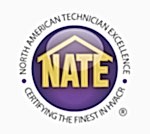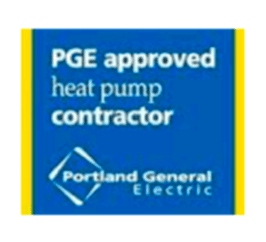Ever felt like your home turns into an oven during the summer months? You’re not alone. Rising temperatures can make indoor life uncomfortable, affecting your productivity, sleep, and overall well-being. But worry not! There are plenty of strategies to quickly cool down a room, ensuring you stay comfortable and energy-efficient. This guide dives deep into the science of heat transfer and offers practical advice for both immediate relief and long-term solutions.
Understanding the Science of Heat Transfer
Before we jump into the tips, it’s crucial to understand how heat transfer works. Heat moves from warmer to cooler areas, and this process happens via conduction, convection, and radiation.
Conduction
Conduction is the transfer of heat through direct contact. Think of your walls, floors, and ceilings as conduits that either keep the heat out or allow it in.
Convection
Convection involves the movement of heat through fluids—this includes air and water. Warm air rises, and cool air sinks, creating natural air currents inside your home.
Radiation
Radiation is the transfer of heat in the form of electromagnetic waves. The sun’s rays heating up your room through the windows is a classic example.
Understanding these principles can help you make smarter decisions about how to manage heat in your home.
Quick Tips for Cooling a Room
When the heat is unbearable, you’ll want immediate solutions. Here are some practical tips for cooling down a room fast:
Optimize Windows
Windows are a primary gateway for heat. During the day, keep them closed and covered with blackout drapes or reflective lining to block out the sun’s rays. At night, open them up to allow cooler air to flow in. Placing fans in windows can amplify this effect, creating a refreshing cross breeze.
Use Ceiling Fans Effectively
Ceiling fans should turn counterclockwise in the summer to push cool air down. This creates a wind-chill effect, making you feel cooler. Ensure your fans are set correctly to maximize their cooling potential.
Seal Unused Rooms
If there are rooms in your house that you don’t use regularly, close the vents and doors to those spaces. This will concentrate cooling efforts on the areas you spend the most time in, making your air conditioning system more efficient.
Dehumidify
Humidity makes the heat feel more oppressive. A dehumidifier can remove excess moisture from the air, making your home feel cooler and more comfortable.
Cook Outside
Avoid using heat-producing appliances like stoves and ovens during the hottest parts of the day. Instead, opt for outdoor grilling or meals that don’t require cooking.
Use Vent Fans
Vent fans should be placed in hot areas like the kitchen and bathroom to expel hot air. This can significantly reduce the overall temperature in your home. It’s also a good idea to run bathroom gans for 15-30 minutes after a shower to remove excess moisture from the air.
Block Heat from Windows
Installing window insulation or reflective coatings can minimize heat transfer through the glass. This is especially effective for windows that receive direct sunlight.
Switch to Energy-Efficient Lighting
Old incandescent light bulbs generate a lot of heat. Switch to LED bulbs, which emit significantly less heat and are more energy-efficient.
Unplug Electronics
Electronics and appliances generate heat even when they’re not in use. Unplug them to reduce heat buildup and save on electricity.
Create a DIY Air Cooler
Place a bowl of ice in front of a fan to create a makeshift air conditioner. The fan will blow air over the ice, emitting a cool breeze that can quickly lower the room temperature.
Long-Term Strategies for More Permanent Cooling Solutions
While quick fixes are great, long-term solutions can offer sustained comfort and efficiency.
Improve Home Insulation
Good insulation is crucial for maintaining a consistent indoor temperature. Sealing leaks around windows and doors can keep cool air in and hot air out. Investing in high-quality insulation materials can pay off in the long run by reducing energy costs and improving comfort.
Implement Smart Home Technology
Smart home devices can optimize your cooling efforts. From smart thermostats to automated blinds, these technologies offer precise control over your home environment, ensuring maximum efficiency and comfort. These devices can also shut off electrical plugs from remote locations, which can give you peace of mind for those times you forget to turn your system off.
Adopt Energy-Efficient Landscaping
Planting trees and shrubs around your home can provide natural shade and reduce the heat absorbed by your house. This eco-friendly solution not only cools your home but also adds to its aesthetic appeal.
Install Reflective Roofing
A reflective roof can deflect more sunlight, reducing the amount of heat absorbed by your home. This can significantly lower indoor temperatures and reduce the need for air conditioning.
Use Attic Fans
Attic fans can expel hot air trapped in the attic, which can dramatically lower the temperature throughout your home. This is an effective way to complement your air conditioning system and improve overall efficiency.
Invest in Energy-Efficient Windows
Double-pane windows with low-E coatings can provide excellent insulation, reducing both heat gain in the summer and heat loss in the winter. This investment can improve comfort and lower energy bills year-round.
Consider an AC Unit
If your home doesn’t have an AC unit, consider one of the following options that fits your home and budget:
- Central Air Conditioner
- Ductless Mini Split
- Other Mini Split Systems
- Window Air Conditioner
- Portable Air Conditioner
- Heat Pump System
Troubleshooting Your Struggling AC
If your current air conditioning system struggles to keep up with the heat, first check the air filters. Dirty filters are the most common issue with underperforming HVAC units. When filters are dirty, they can restrict airflow, forcing your AC to work harder and less efficiently. Also, evaluate the size of your HVAC unit. An undersized or oversized AC may be unable to cool your space effectively.
Additional Troubleshooting Tips for Your AC
- Inspect the Ductwork: Check for any leaks or blockages in your ductwork. Sealing these can improve airflow and efficiency.
- Clean the Coils: Ensure both the evaporator and condenser coils are clean. Dust and debris can significantly hinder performance.
- Verify Thermostat Functionality: Make sure your thermostat is working correctly and accurately measuring the temperature in your home.
- Check Refrigerant Levels: Low refrigerant can lead to poor cooling. If you suspect a leak, contact a professional to inspect and recharge the system.
- Look for External Obstacles: Ensure that trees, bushes, or structures are not obstructing the airflow around the outdoor unit.
- Consider a Smart Thermostat: Upgrade to a smart thermostat to better regulate temperature based on your schedule, which can enhance overall efficiency.
Regular maintenance is crucial, so schedule a professional inspection to assess refrigerant levels and system performance. Set your thermostat to the highest comfortable setting – we recommend 78 degrees. This will reduce the workload on your air conditioning unit, saving energy while still keeping you cool. Addressing these common issues can enhance your AC’s functionality, ensuring your home remains a comfortable retreat during those sweltering summer days.
Upgrade Your HVAC System
Modern, energy-efficient HVAC systems are designed to cool your home more effectively and consume less energy. Consider upgrading to a smart thermostat that allows for better temperature control and can adapt to your schedule.
Air Conditioning Experts in Portland
Keeping your home cool during the scorching summer months doesn’t have to be a daunting task. Jacobs technicians are not only skilled in keeping your AC running smoothly but also excellent listeners and educators. They’re always ready to offer insider tips and help you find the best solutions for your heating, cooling, and ventilation needs.
If you need air conditioning maintenance, we are ready to help you save money and keep surprise breakdowns away. You can schedule your next tune-up and take the stress and hassle out of maintaining your system. Ready for AC to be installed? We can take care of that too!No matter what you need, we’re always just a phone call away.










